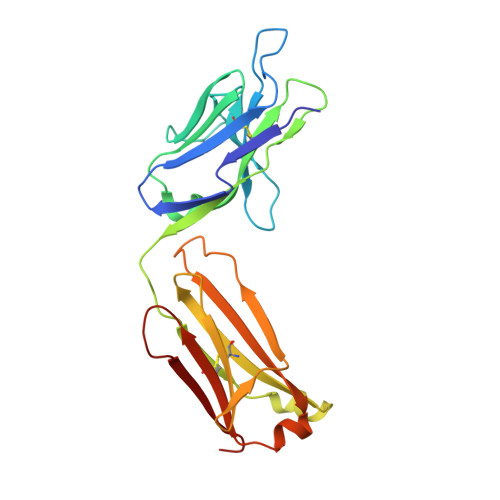Engineering Highly Potent and Selective Microproteins against Nav1.7 Sodium Channel for Treatment of Pain.
Shcherbatko, A., Rossi, A., Foletti, D., Zhu, G., Bogin, O., Galindo Casas, M., Rickert, M., Hasa-Moreno, A., Bartsevich, V., Crameri, A., Steiner, A.R., Henningsen, R., Gill, A., Pons, J., Shelton, D.L., Rajpal, A., Strop, P.(2016) J Biological Chem 291: 13974-13986
- PubMed: 27129258
- DOI: https://doi.org/10.1074/jbc.M116.725978
- Primary Citation of Related Structures:
5EPM - PubMed Abstract:
The prominent role of voltage-gated sodium channel 1.7 (Nav1.7) in nociception was revealed by remarkable human clinical and genetic evidence. Development of potent and subtype-selective inhibitors of this ion channel is crucial for obtaining therapeutically useful analgesic compounds. Microproteins isolated from animal venoms have been identified as promising therapeutic leads for ion channels, because they naturally evolved to be potent ion channel blockers. Here, we report the engineering of highly potent and selective inhibitors of the Nav1.7 channel based on tarantula ceratotoxin-1 (CcoTx1). We utilized a combination of directed evolution, saturation mutagenesis, chemical modification, and rational drug design to obtain higher potency and selectivity to the Nav1.7 channel. The resulting microproteins are highly potent (IC50 to Nav1.7 of 2.5 nm) and selective. We achieved 80- and 20-fold selectivity over the closely related Nav1.2 and Nav1.6 channels, respectively, and the IC50 on skeletal (Nav1.4) and cardiac (Nav1.5) sodium channels is above 3000 nm The lead molecules have the potential for future clinical development as novel therapeutics in the treatment of pain.
- Rinat Laboratories, Pfizer Inc., South San Francisco, California 94080.
Organizational Affiliation:



















